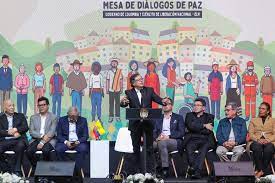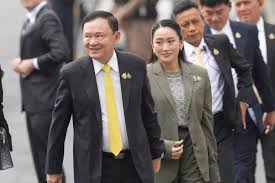
Across Colombia, decades of war between leftist guerrillas, rightwing paramilitaries, trafficking groups and the government have left more than 9.5 million people – nearly 20% of the population – as victims of forced displacement, homicide, sexual violence and more.
As conflict in the country grows more complex, with mutating armed groups warring for control, Colombia’s rebel-turned-president Gustavo Petro has promised to cement “total peace” and end one of the world’s longest-running conflicts.
WHAT IS COLOMBIA PRESIDENT PETRO’S PLAN?
Petro aims to rewire how the South American nation addresses endemic violence, replacing military operations with social programs tackling the conflict’s roots, including poverty in violence-torn areas like Buenaventura, a coastal city of 450,000 people and Colombia’s busiest port.
He’s also negotiating with the most powerful of Colombia’s armed groups – from leftist guerrillas to smaller trafficking mafias – in an effort to get them to demobilize simultaneously. More than 31,000 armed fighters make up the militias that are in some stage of negotiations or say they want to negotiate peace, according to government estimates. No groups have yet signed full peace deals, though the National Liberation Army (ELN) and Colombia recently agreed to a six-month cease-fire.
Young People in Peace will give monthly stipend of a million pesos, around $250, to 100,000 Colombians ages of 14 to 28 “linked or at the risk of being linked” to criminal groups, Hoyos said. They’ll be required to seek education and carry out some form of social work.
“The idea behind ‘total peace’ is right on the money. You know, let’s look at the social issues behind these conflicts,” said Jeremy McDermott, co-founder of InSight Crime, a Colombia-based think tank. “The great challenge Petro faces is: How do you talk peace without strengthening these groups?”
WHY IS IT NOTABLE?
The Colombian government has long worked to get criminal groups to set down arms, and in 2016 was hailed for signing a peace pact with the country’s most powerful guerrilla force, the Revolutionary Armed Forces of Colombia (FARC). Much of the accords centered on similar social programs and reintegration opportunities for rebels.
It earned then-President Juan Manuel Santos a Nobel Peace Prize for “bringing the world’s longest running civil war to an end.” But the calm that followed was short-lived. As authorities failed to carry out the agreement and seize control of territories where FARC rebels once roamed, a slew of mutating mafias warred to take their place. Bloodshed roared back.
Now, in the fallout of the FARC accords, the government is trying to strike similar agreements, but the country’s conflict is now so complex, it will be an uphill battle.
WHAT IS HAPPENING IN BUENAVENTURA?
Buenaventura’s warring gangs Los Shottas and Los Espartanos are among a growing set of armed groups lining up to negotiate peace deals with Colombia’s new government. The two gangs are the latest to lay siege to Buenaventura – it’s the crown jewel of narcotrafficking routes, the jump point from which drugs pour out to the rest of the world.
In Buenaventura, turf wars have bred a particularly brutal conflict, making the city one of the world’s most violent. Homicide, kidnapping, torture and sexual abuse are commonplace. So are mass graves and “chop houses,” where gangs dismember enemies, letting their screams echo through neighborhoods. The young people who lack opportunities and are forcibly recruited into gangs are equal parts victims and victimizers, many here say.
The gangs have been in dialogues and under on-and-off ceasefires for the past year, inspiring hope in many. A delegate for Los Shottas told The Associated Press that the group hopes for peace, but would only demobilize if every single armed group in Colombia also sets down their weapons.
On Buenaventura’s jungled fringes, rival groups wait to seize their part of the city – police say there’s so many, they’ve lost count.
“Do you know how many groups want to take control of Buenaventura? Tons,” said the delegate, who spoke on condition that he be identified by his nom de guerre, Jeronimo. “And if they hand over their power, what will happen? Those groups are going to come and exterminate us.”
HOW DO PEOPLE FEEL?
Many in Buenaventura long for peace, but decades of conflict don’t inspire trust. People in the city who have fallen victim to gang warfare say they hope the gangs are serious about signing peace accords, but worry they’re just taking advantage of government ceasefires to grow stronger.
That’s a concern across the country.
In the past year, armed groups have expanded territorial control, sources of income and recruitment, according to a report by the think tank Ideas for Peace Foundation. While fights with law enforcement have dipped, warring between rival groups has only risen. Kidnappings have risen by 77% and extortion by 15%.




